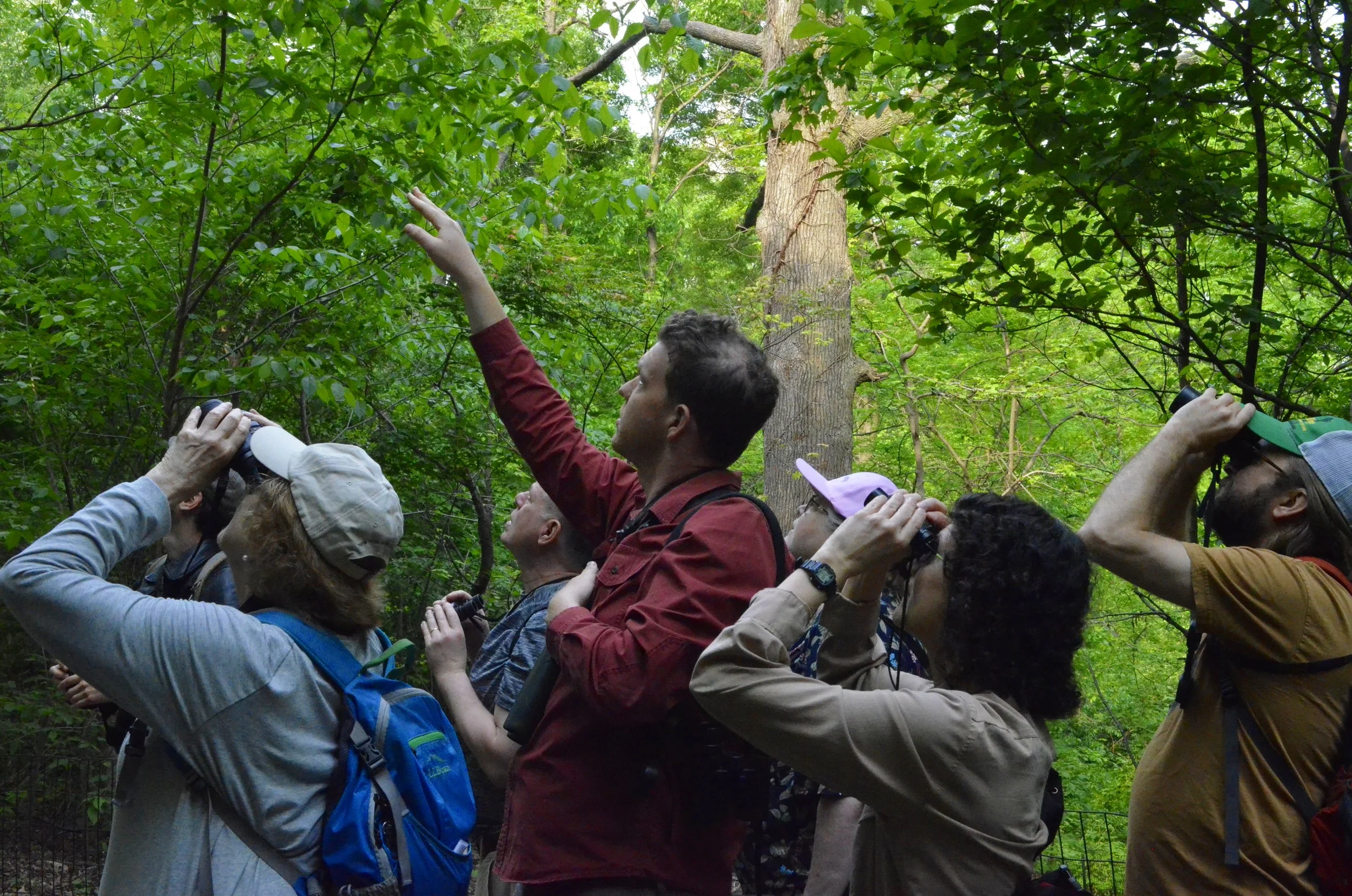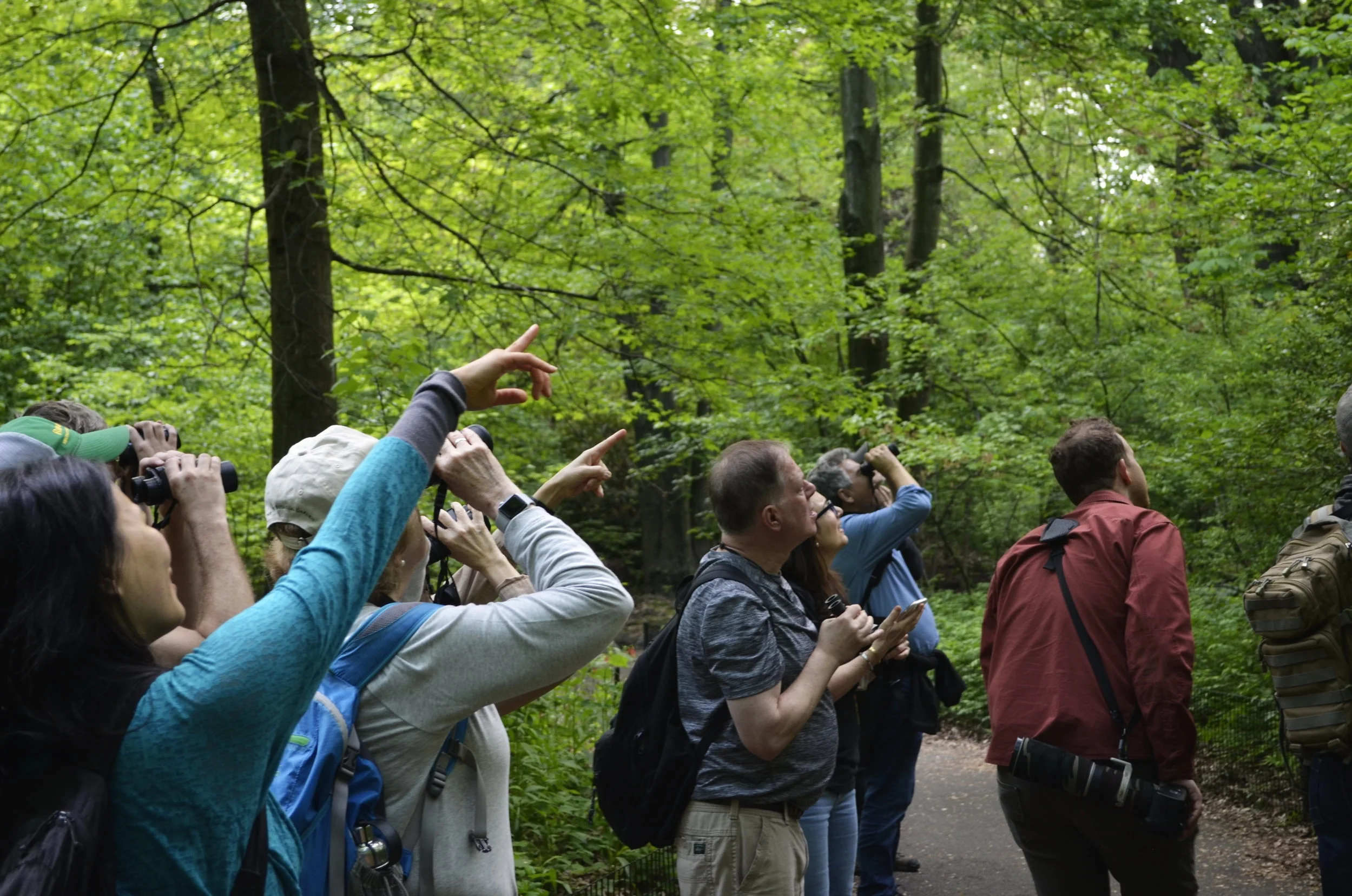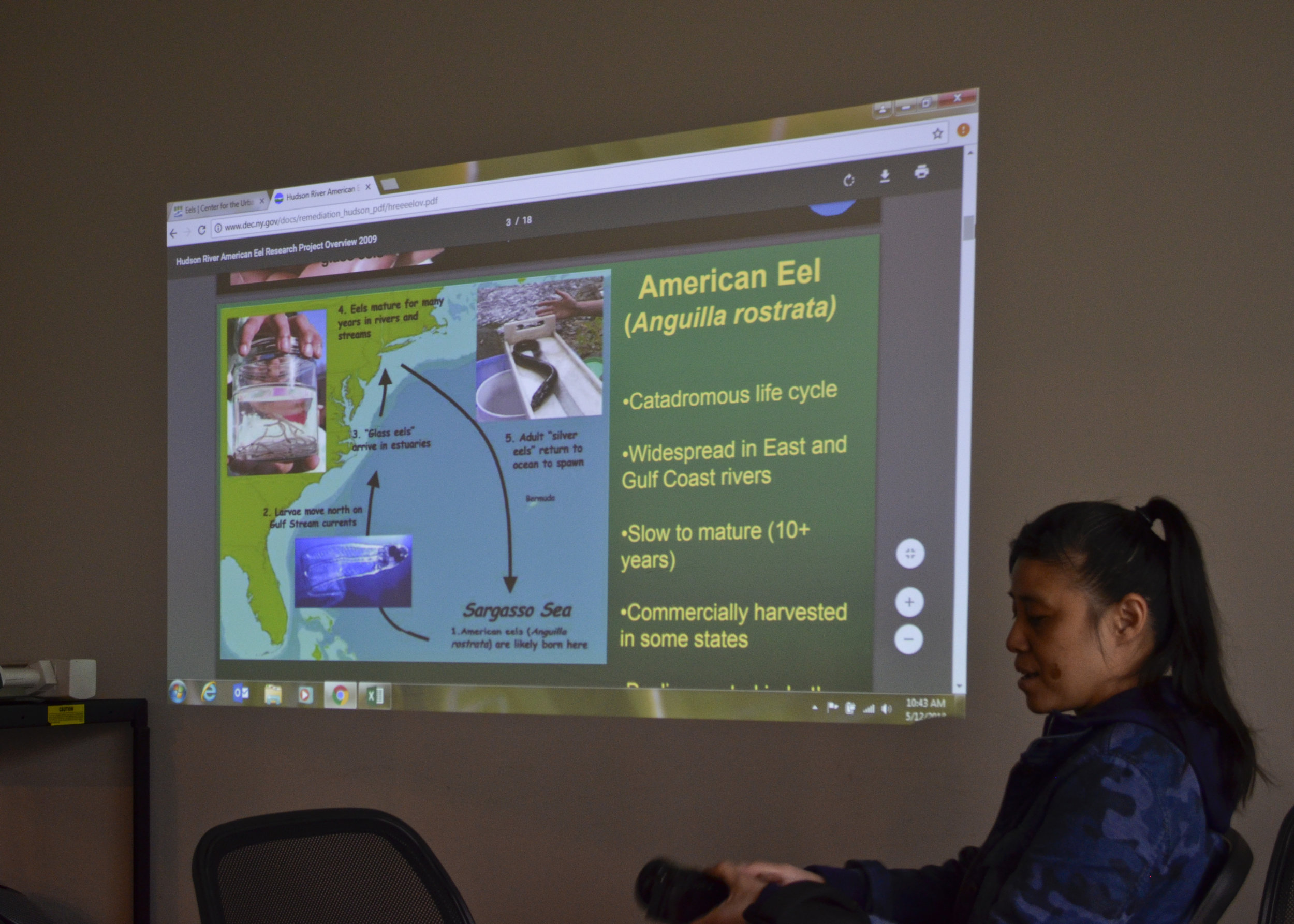On Sunday, May 19, in the early morning hours, Luke Musher, ornithologist and Ph.D. student from the Richard Gilder Graduate School of the American Museum of Natural History, led the MSNH on a free guided bird walk through Central Park to see spring migrants. Using our eyes and ears, we observed 39 species during the walk. Some notable birds spotted include a female Scarlet Tanager, Blackpoll Warbler, and Swainson’s Thrush. Below is a complete list of birds sighted or heard during the walk.
Mallard (Anas platyrhynchos) 8
Rock Pigeon (Feral Pigeon) (Columba livia (Feral Pigeon)) 8
Mourning Dove (Zenaida macroura) 4
Spotted Sandpiper (Actitis macularius) 1
Herring Gull (Larus argentatus) 2
Double-crested Cormorant (Phalacrocorax auritus) 1
Red-bellied Woodpecker (Melanerpes carolinus) 4
Downy Woodpecker (Dryobates pubescens) 1
Northern Flicker (Colaptes auratus) 2
Great Crested Flycatcher (Myiarchus crinitus) 4
Red-eyed Vireo (Vireo olivaceus) 1
Gray-cheeked Thrush (Catharus minimus) 1
Swainson's Thrush (Catharus ustulatus) 8
American Robin (Turdus migratorius) 35
Gray Catbird (Dumetella carolinensis) 15
European Starling (Sturnus vulgaris) 20
Cedar Waxwing (Bombycilla cedrorum) 15
American Goldfinch (Spinus tristis) 2
White-throated Sparrow (Zonotrichia albicollis) 1
Baltimore Oriole (Icterus galbula) 5
Common Grackle (Quiscalus quiscula) 10
Ovenbird (Seiurus aurocapilla) 3
Worm-eating Warbler (Helmitheros vermivorum) 1
Black-and-white Warbler (Mniotilta varia) 2
Tennessee Warbler (Oreothlypis peregrina) 1
Common Yellowthroat (Geothlypis trichas) 5
American Redstart (Setophaga ruticilla) 8
Cape May Warbler (Setophaga tigrina) 1
Northern Parula (Setophaga americana) 5
Magnolia Warbler (Setophaga magnolia) 2
Bay-breasted Warbler (Setophaga castanea) 3
Yellow Warbler (Setophaga petechia) 1
Chestnut-sided Warbler (Setophaga pensylvanica) 1
Blackpoll Warbler (Setophaga striata) 8
Black-throated Blue Warbler (Setophaga caerulescens) 2
Scarlet Tanager (Piranga olivacea) 3
Northern Cardinal (Cardinalis cardinalis) 6
Indigo Bunting (Passerina cyanea) 1
House Sparrow (Passer domesticus) 25
View this checklist online at https://ebird.org/view/checklist/S56485389
This report was generated automatically by eBird v3 (https://ebird.org/home)
To view more photos from this event, please visit our gallery. All photo credit goes to Stephanie Loria.
Luke Musher is a Ph.D. candidate at the American Museum of Natural History studying how biodiversity originates in the tropics. He specifically focuses his research on the evolutionary history of birds in the Amazon rainforest, which is the most biodiverse ecosystem on the planet. Musher has been birding for more than fifteen years, and during that time he has travelled all over the United States and Latin America for both research and bird watching. Still, he loves birding in New York, and no place compares to the numbers seen in Central Park during migration season.






































































